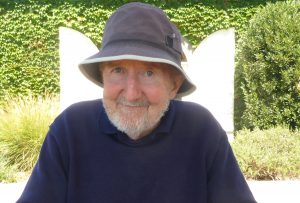
Peter Brockwell
Peter J. Brockwell, a leading figure in applied probability and time series, passed away on 5 July 2023, in Melbourne, Australia. He was Professor Emeritus of Colorado State University and Honorary Professorial Fellow in Mathematics and Statistics at the University of Melbourne. He was 85.
Peter was born and raised in Melbourne and although he spent most of his professional life overseas, primarily in the USA, he was a proud Melburnian who rarely missed an opportunity to extol the virtues of the city. He earned a BA in Electrical Engineering, a BA(Hons), and an MA in Statistics, at the University of Melbourne. While tutoring there, he had the good fortune of meeting Pam Carr, whom he later married. After completing these degrees, he began his PhD studies in 1962 at the Australian National University (ANU).
At the ANU, Peter worked under the direction of Jo Moyal on problems related to scattering/movement of particles. The research caught the eye of the Argonne National Laboratory in Chicago who hired Peter as Research Associate in 1966 and later Assistant Mathematician (1967–70). Peter and Pam travelled to the USA as newlyweds to take this position. While at Argonne, Peter completed his dissertation, Stochastic problems in transport theory, which he defended in 1967. During his stint at Argonne, Peter took leave to become a visiting research associate at Michigan State University (MSU). He subsequently became an Associate Professor at MSU while taking short leaves to Stanford where he was supported by the probabilists Samuel Karlin and Kai Lai Chung. With this exposure, Peter’s research career was well on its way. While most of Peter’s 39 years in academia was spent at Colorado State University (1976–2007), he held short posts at MSU, La Trobe University, the University of Melbourne, and the Royal Melbourne Institute of Technology.
Peter’s research interests were shaped by his strong background in electrical engineering and applied mathematics. Australia’s developing expertise in applied probability in the 1960s was also a major influence on the problems that Peter would choose to pursue. His early work focused on the application of discontinuous Markov processes and population processes to the problem of scattering of particles. He studied properties of various queuing models, storage theory, and population models. In the early 1980s his research shifted more towards stochastic processes and time series. He developed an interest in Lévy processes. He developed theory for existence of stationary solutions to nonlinear time series models that were based on emerging theory of stationarity of Markov chains. Since the 1990s, Peter’s most cited work is related to the embedding problem in time series. For example, it is natural to ask when a discrete-time ARMA process can be embedded in a continuous-time ARMA process (CARMA). First one needs to give a clear definition of a continuous-time ARMA process. Peter basically answered these questions. He also considered long memory (or fractionally integrated) versions of CARMA processes and Lévy -driven CARMA processes. In order to make these processes useful in practice, Peter also developed inference procedures for continuous-time models. Much of the continuous-time work arose out of a 2001–02 visit to the Mathematics Department at Technical University of Munich (TUM); he developed a number of fruitful collaborations here, notably with Professor Claudia Klüppelberg and many of her students/assistants including Tina Marquardt and Alex Lindner. A book with Alex on continuous-time processes is scheduled to be published early next year.
Peter received many accolades and awards for his path-breaking research. He was Fellow of the IMS and the American Statistical Association, and was von Neumann Guest Professor at the TU Munich. He had an impressive record of mentoring and advising PhD students; 22 wrote their dissertations under Peter’s direction.
Aside from Peter’s research contributions, he is perhaps best known for the two Brockwell–Davis books: Time Series: Theory and Methods and Introduction to Time Series and Forecasting. These books became the standard textbooks and research primers in time series during the past 30 years. Time Series: Theory and Methods was a family affair with Pam typing out the initial manuscript using an IBM Selectric typewriter and son Anthony writing much of the computer code for the computer package that accompanied the book.
Peter is survived by his wife Pam, three sons, Anthony, Matthew, and Harry, and five grandchildren. Peter was one of the kindest and nicest individuals that one will come across. He served as a role model to many and was the epitome of a true scholar.
—
Written by Anthony Brockwell, and by Richard Davis, Columbia University